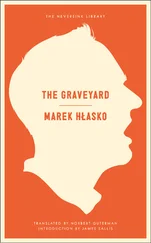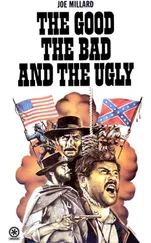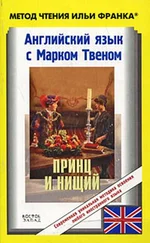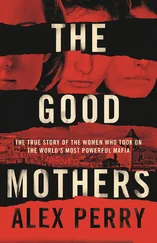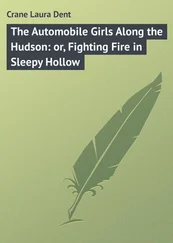Marek Edelman - The Ghetto Fights
Здесь есть возможность читать онлайн «Marek Edelman - The Ghetto Fights» весь текст электронной книги совершенно бесплатно (целиком полную версию без сокращений). В некоторых случаях можно слушать аудио, скачать через торрент в формате fb2 и присутствует краткое содержание. Жанр: Биографии и Мемуары, на английском языке. Описание произведения, (предисловие) а так же отзывы посетителей доступны на портале библиотеки ЛибКат.
- Название:The Ghetto Fights
- Автор:
- Жанр:
- Год:неизвестен
- ISBN:нет данных
- Рейтинг книги:3 / 5. Голосов: 1
-
Избранное:Добавить в избранное
- Отзывы:
-
Ваша оценка:
- 60
- 1
- 2
- 3
- 4
- 5
The Ghetto Fights: краткое содержание, описание и аннотация
Предлагаем к чтению аннотацию, описание, краткое содержание или предисловие (зависит от того, что написал сам автор книги «The Ghetto Fights»). Если вы не нашли необходимую информацию о книге — напишите в комментариях, мы постараемся отыскать её.
The Ghetto Fights — читать онлайн бесплатно полную книгу (весь текст) целиком
Ниже представлен текст книги, разбитый по страницам. Система сохранения места последней прочитанной страницы, позволяет с удобством читать онлайн бесплатно книгу «The Ghetto Fights», без необходимости каждый раз заново искать на чём Вы остановились. Поставьте закладку, и сможете в любой момент перейти на страницу, на которой закончили чтение.
Интервал:
Закладка:
No words of any human language are strong enough to describe the "Umschlag" now, when no help from anywhere or anybody can be expected. The sick, adults as well as children, previously brought here from the hospital, lie deserted in the cold halls. They relieve themselves right where they lie, and remain in the stinking slime of excrement and urine. Nurses search the crowd for their fathers and mothers and, having found them, inject longed for deathly morphine into their veins, their own eyes gleaming wildly. One doctor compassionately pours a cyanide solution into the feverish mouths of strange, sick children. To offer one's cyanide to somebody else is a really heroic sacrifice, for cyanide is now the most precious, the most irreplaceable thing. It brings a quiet, peaceful death, it saves from the horror of the cars.
Thus the Germans deported 60,000 people within two days.
From the "round-up" the following of our comrades were deported: Natan Liebeskind, Dora Kociotek, J. Gruszka, Anka Wolkowicz, Michelson, Cluwa Krysztat-Nisenbaum, and many others. Comrade Bernard Goldsztejn, for whom the Germans were specifically searching, had to hide on the "Aryan side".
On September 12th the "action" was officially ended. A nominal number of 33,400 Jews working in factories and for German employers, 3,000 employees of the Jewish Council included, remained in Warsaw. Actually, counting the people who had been able to remain hidden in cellars, etc., the number of remaining Jews was approximately 60,000. All were billeted at their working posts. New walls divided the ghetto, and between the inhabited blocks there were vast, empty, desolated areas, haunted by the dead quiet of the street, the tapping of the open window frames in the wind, and the sickly stench of unburied corpses.
By now the ghetto comprised: (1) The area of Tobbens', Schultz's, Rohrich's shops--Leszno Street, Karmelicka Street, Nowolipki Street, Smocza, Nowolipie and Zelazna Streets up to Leszno; (2) The "brush-makers' area"-- Swietojerska Street, Walowa, Franciszkanska, and Bonifraterska Streets up to Swietojerska; (3) The "central ghetto"--Gesia Street, Franciszkanska, Bonifraterska, Muranowska, Pokorna, Stawki, Parysowski Square, and Smocza Street up to Gesia.
Workers of one shop were now forbidden to communicate with those of another. The Germans exploited to the utmost the lives of those whom they had spared. The usual working hours for Jews were 12 hours daily, and sometimes even longer, without interruption, while the working and food condition were simply catastrophic. As in the first period, when spotted fever had been the ghetto's plague, epidemics again ravaged the ghetto. This time tuberculosis was rampant.
Only the garbage collectors and the grave-diggers (the so-called "Pinker-Boys"--a name derived from the name of a well-known Warsaw Jewish funeral home) became wealthy, transporting to the "Aryan side" in coffins and under garbage piles valuables which the ghetto could no longer use. It became the dream of every inhabitant of the harassed Jewish section to escape to the "Aryan side" and to establish himself there.
In the beginning of October 1942, talks between our own Executive Committee and the Command of the Hechalutz Battle Organization took place. The purpose of the talks was the establishment of a joint organization. This matter, argued back and forth among our comrades, was finally settled at a meeting of the Warsaw Party cadres which took place on October 15th. We then decided that a joint battle organization should be formed, and that its purpose should be to prepare armed resistance for the time when the Germans might attempt to repeat the extermination procedure in the Warsaw ghetto. We realized that only through coordinated work and our utmost joint efforts could any results at all be expected.
About October 20th the so-called Coordinating Committee (KK) whose members were representatives of all existing political parties, was formed. Abrasha Blum and Berek Sznajdmil represented us on the KK. At the same time the Command of the new Jewish Battle [Fighting] Organization (ZOB) was appointed. Mordechaj Anielewicz (Hashomer) became the ZOB's Commander. Marek Edelman was called into the Command to represent our groups. Dr. L. Fajner ("Mikolaj") undertook to represent the KK on the "Aryan side", on our behalf. An executive committee for the KK was also appointed, as was a propaganda committee. Abrasha Blum represented us on these committees.
Since the ghetto was divided into separate areas between which there was almost no contact, the ZOB necessarily had to organize its work accordingly. We took over the leadership in the "brush-makers' region" (Grylak), the W.C. Tobbens area (Paw), and the Prosta Street neighbourhood (Kersz). We succeeded in forming several battle groups. Thus B. Pelc and Goldsztejn led two "fives" in the central ghetto; Jurek Blones and Janek Bilak headed two "fives" in the "brush-makers' area"; A. Fajoer and N. Chmielnicki were the leaders in the Schultz area; W. Rozowski led our group at the Rohrich shop.
Once again we built a large organization, not alone this time, but by common efforts, and once again the major problem of weapons was encountered. There were almost none at all in the ghetto. In must be taken into account that the time was the year 1942. The resistance movement of the Poles was just beginning at the time, and only vague stories were being circulated about partisans in the woods. It must be remembered that the first organized act of armed resistance on the part of the Poles did not take place until March 1943. Therefore, there was nothing unusual in the fact that our efforts to obtain arms and ammunition through the Government Delegate and through other agencies encountered major difficulties and as a general rule, brought no results. We were able to obtain a few pistols from the People's Guard. Afterwards two assaults took place: on the Commander of the Jewish police, Lejkin, on October 29th, and on J. First (the Jewish Council's representative at the "Umsiedlungsstab") on November 29th.
And so the ZOB gained its first popularity. It carried out several more assaults against a few Jewish foremen who caused most of the suffering on the part of the Jewish slave labourers. During such an assault in the Hallman area (Hallman's was a joinery shop), German factory guards arrested three of the participants. At night, however, our group from the Rohrich area, led by G. Fryszdorf, disarmed the German guards and freed our prisoners.
The following incident may serve to clarify the conditions in which we had to work at the time. About mid-November (in the period of "quiet") a few hundred Jews from several shops were deported, allegedly to work in the Lublin Concentration Camp. During the trip Comrade W. Rozowski broke open the bars in the car window, threw out six female prisoners, while the train was in motion (among others, Guta Btones, Chajka Betchatowska, Wiernik, M. Kojfman), and then jumped out himself. Similar feats would have been quite impossible to perform at the time of the first deportations, because even if there had been somebody brave enough to attempt an escape, the other victims would never had allowed it for fear of German revenge. By now the Jews finally began to realize that deportation actually meant death; that there was no other alternative but at least to die honourably. But as was quite natural for human beings, they still tried to postpone death and "honour" for as long a time as possible.
At the end of December 1942 we received our first transport of weapons from the Home Army. It was not much--there were only ten pistols in the whole transport--but it enabled us to prepare for our first major action. We planned it for January 22nd and it was to be a retaliatory measure against the Jewish police.
However, on January 18th, 1943, the ghetto was surrounded once again and the "second liquidation" began. This time, however, the Germans were not able to carry out their plans unchallenged. Four barricaded battle groups offered the first armed resistance in the ghetto.
Читать дальшеИнтервал:
Закладка:
Похожие книги на «The Ghetto Fights»
Представляем Вашему вниманию похожие книги на «The Ghetto Fights» списком для выбора. Мы отобрали схожую по названию и смыслу литературу в надежде предоставить читателям больше вариантов отыскать новые, интересные, ещё непрочитанные произведения.
Обсуждение, отзывы о книге «The Ghetto Fights» и просто собственные мнения читателей. Оставьте ваши комментарии, напишите, что Вы думаете о произведении, его смысле или главных героях. Укажите что конкретно понравилось, а что нет, и почему Вы так считаете.

